Abstract
The theory of the singlet-singlet annihilation in quasi-homogeneous photosynthetic antenna systems is developed further. In the new model, the following important contributions are taken into account: 1) the finite excitation pulse duration, 2) the occupation of higher excited states during the annihilation, 3) excitation correlation effects, and 4) the effect of local heating. The main emphasis is concentrated on the analysis of pump-probe kinetic measurements demonstrating the first two above possible contributions. The difference with the results obtained from low-intensity fluorescence kinetic measurements is highlighted. The experimental data with picosecond time resolution obtained for the photosynthetic bacterium Rhodospirillum rubrum at room temperature are discussed on the basis of this theory.
Full text
PDF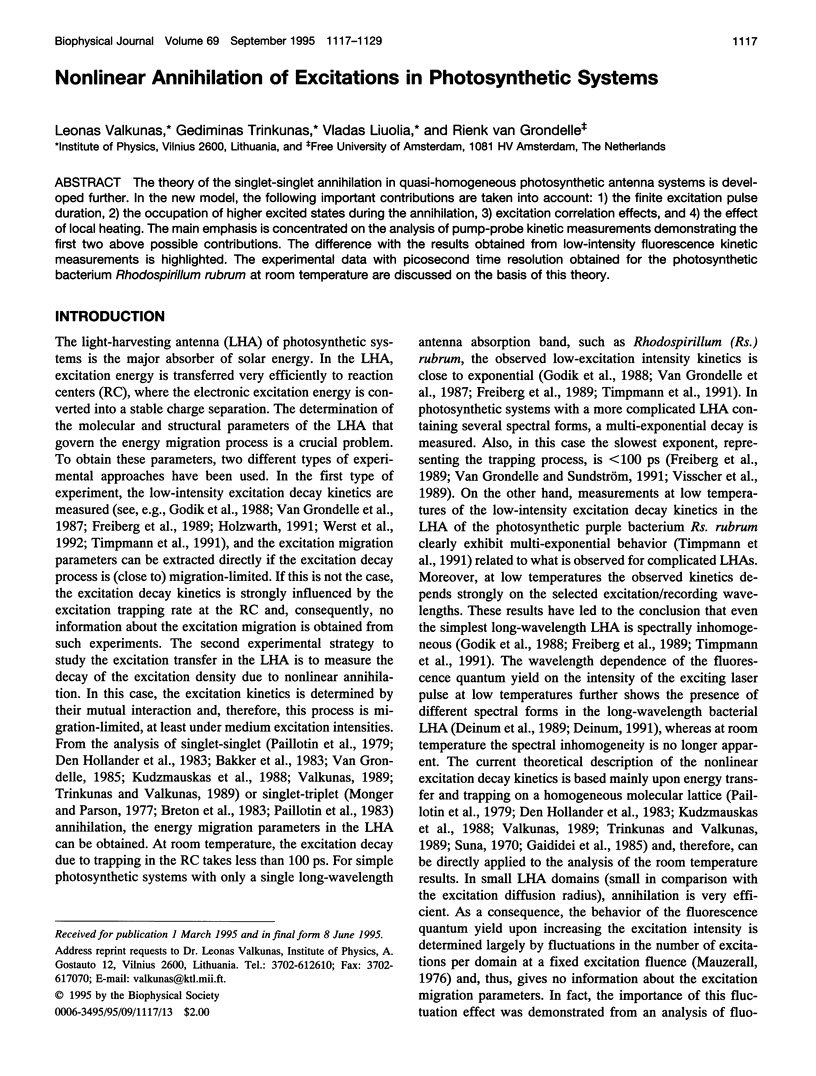

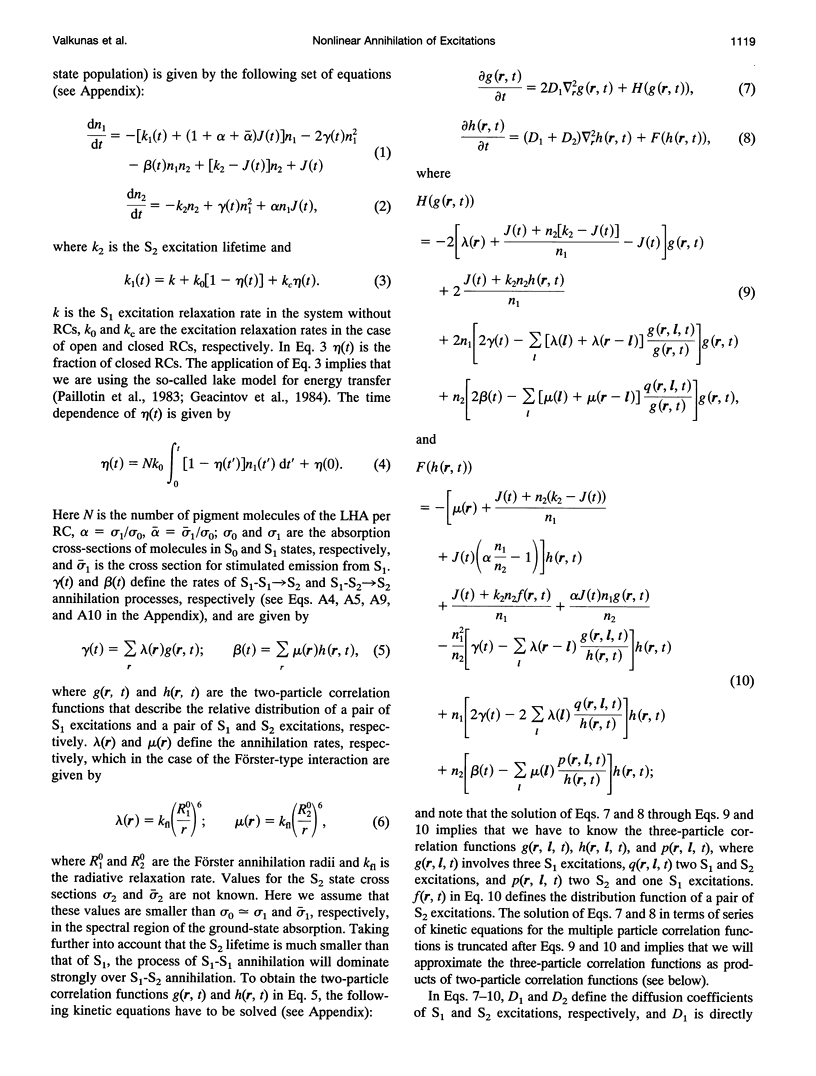
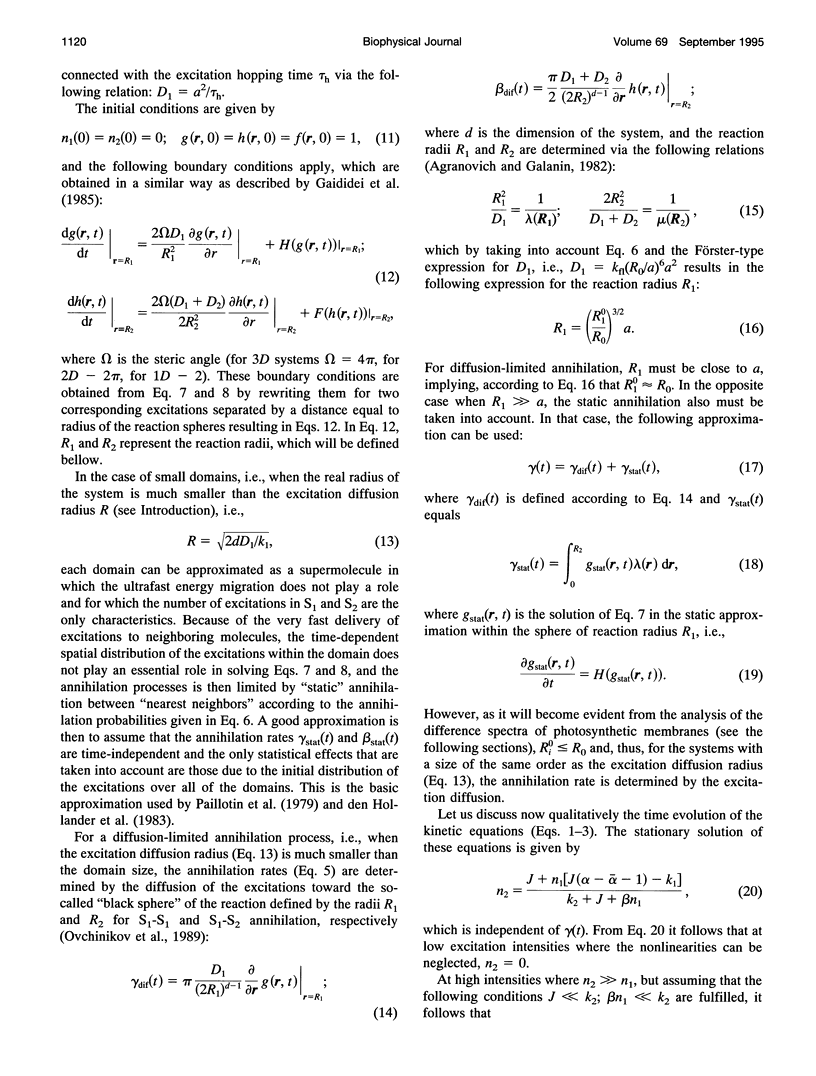
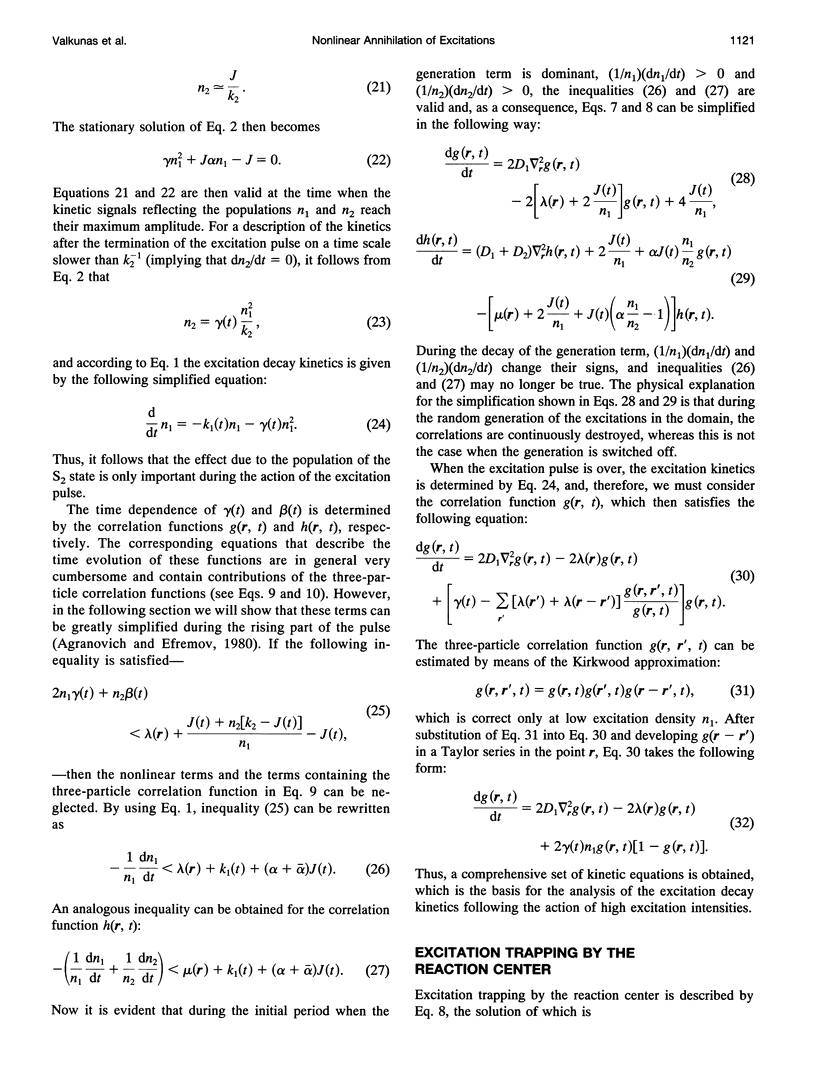
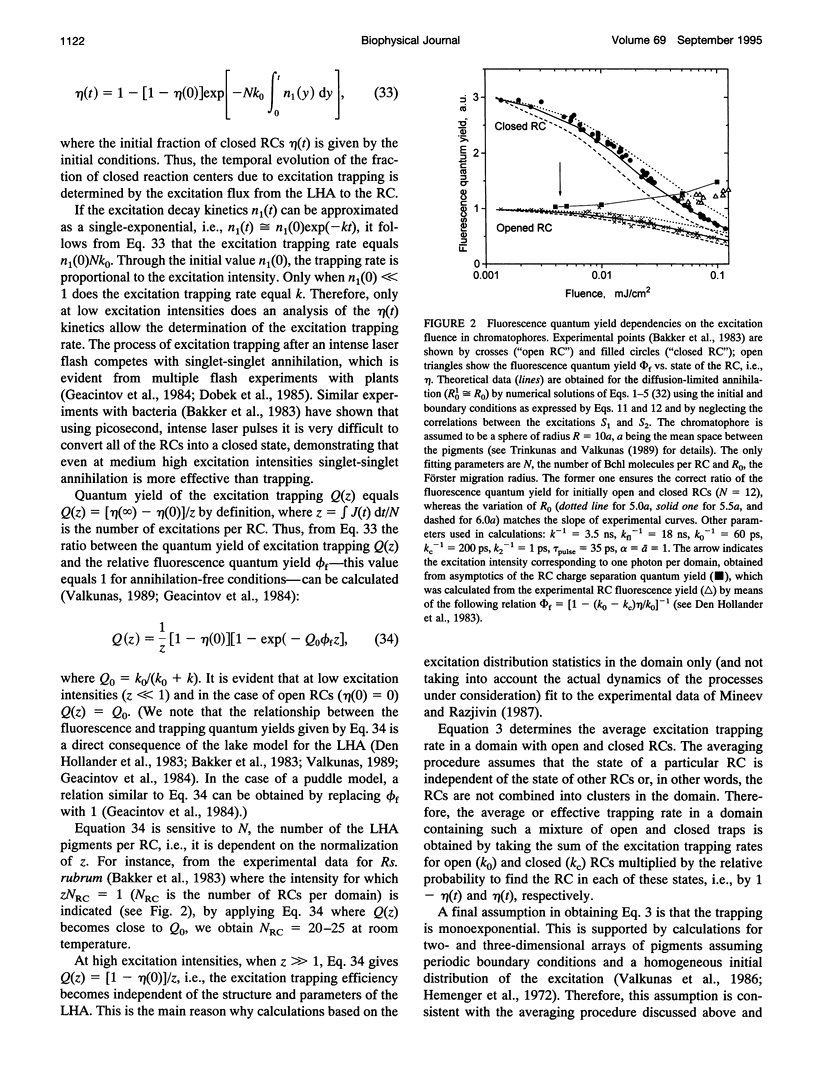
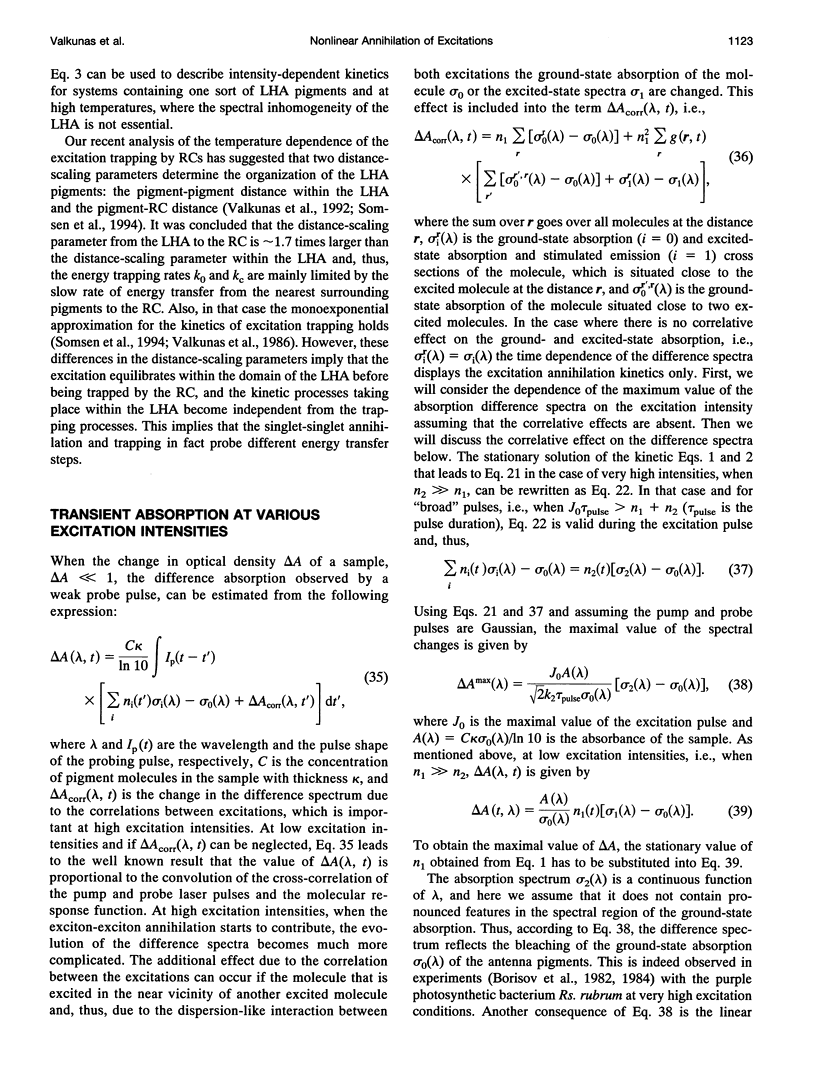
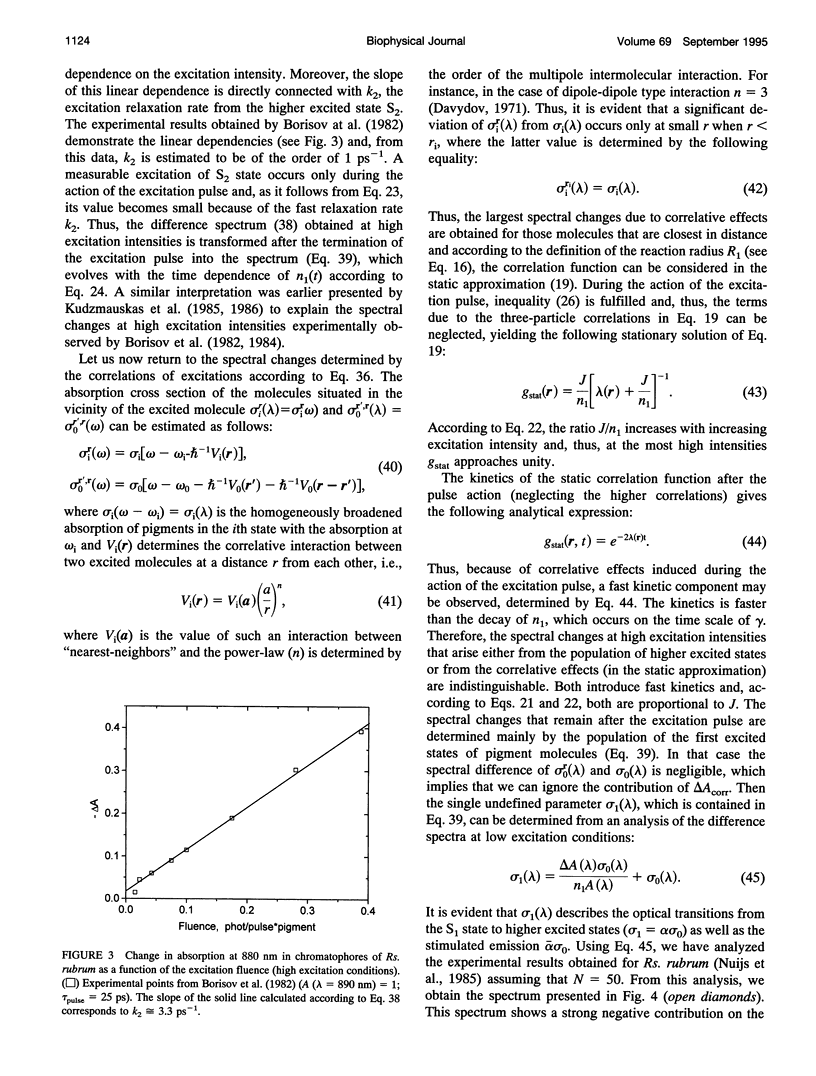
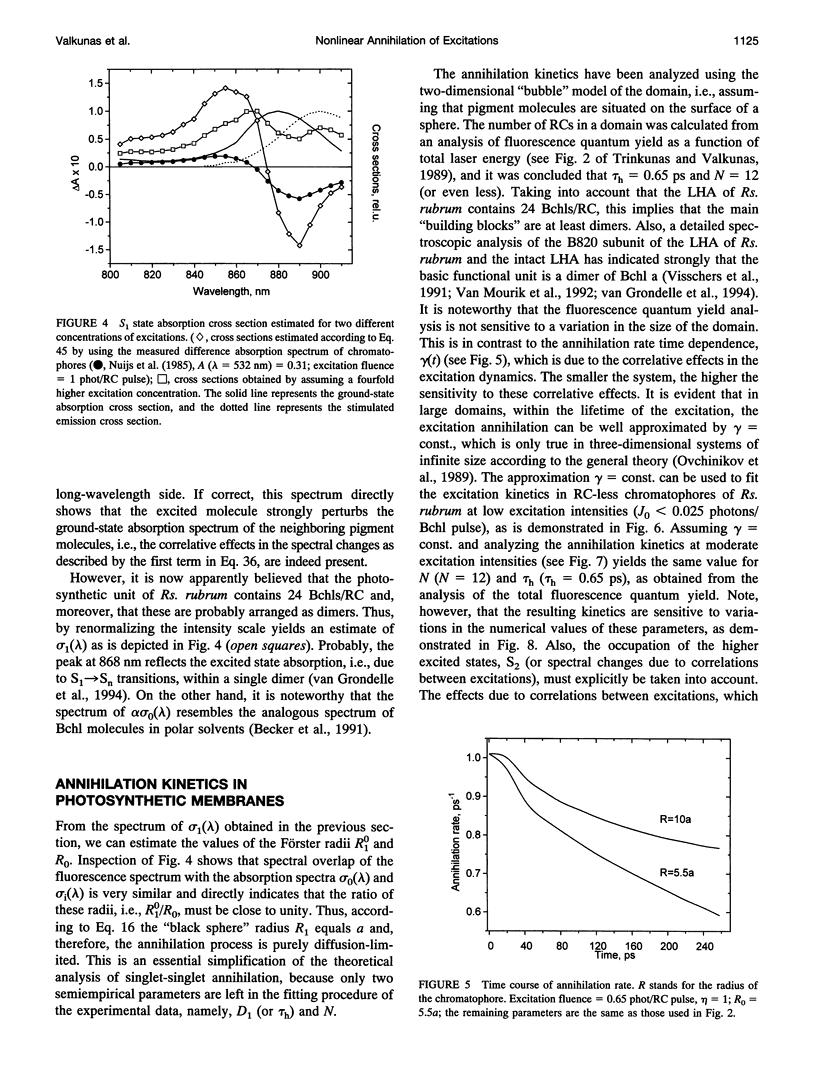
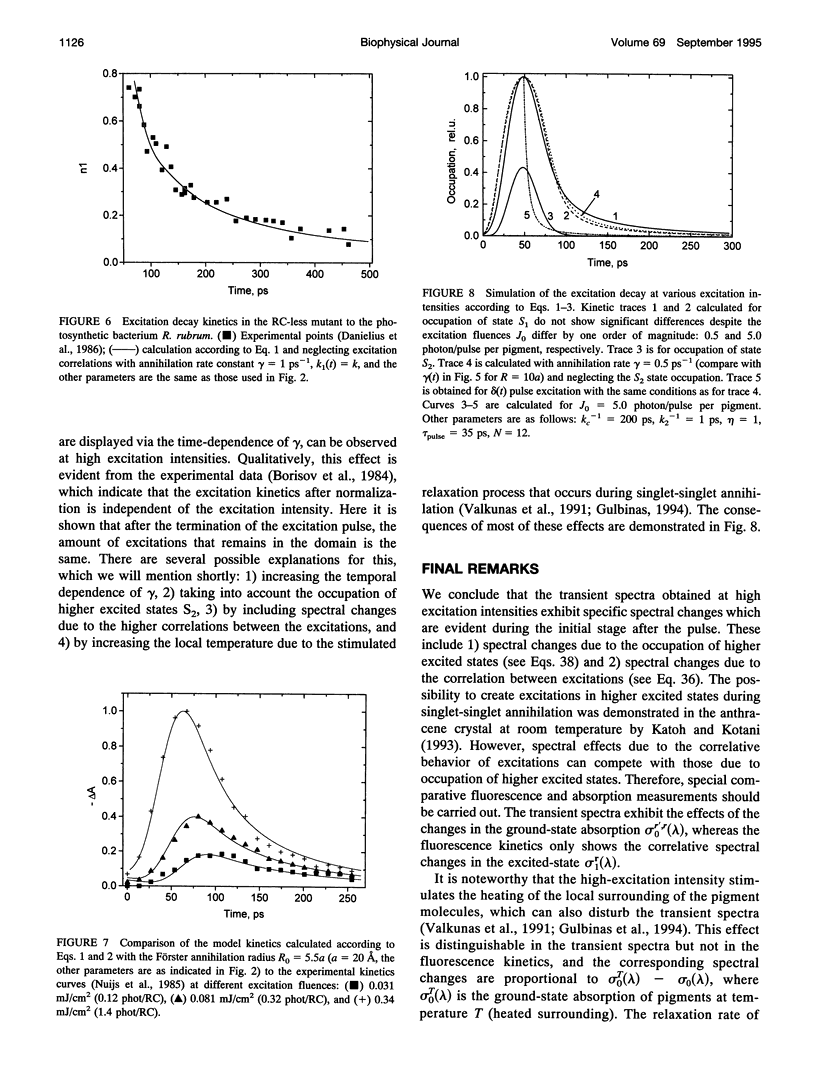
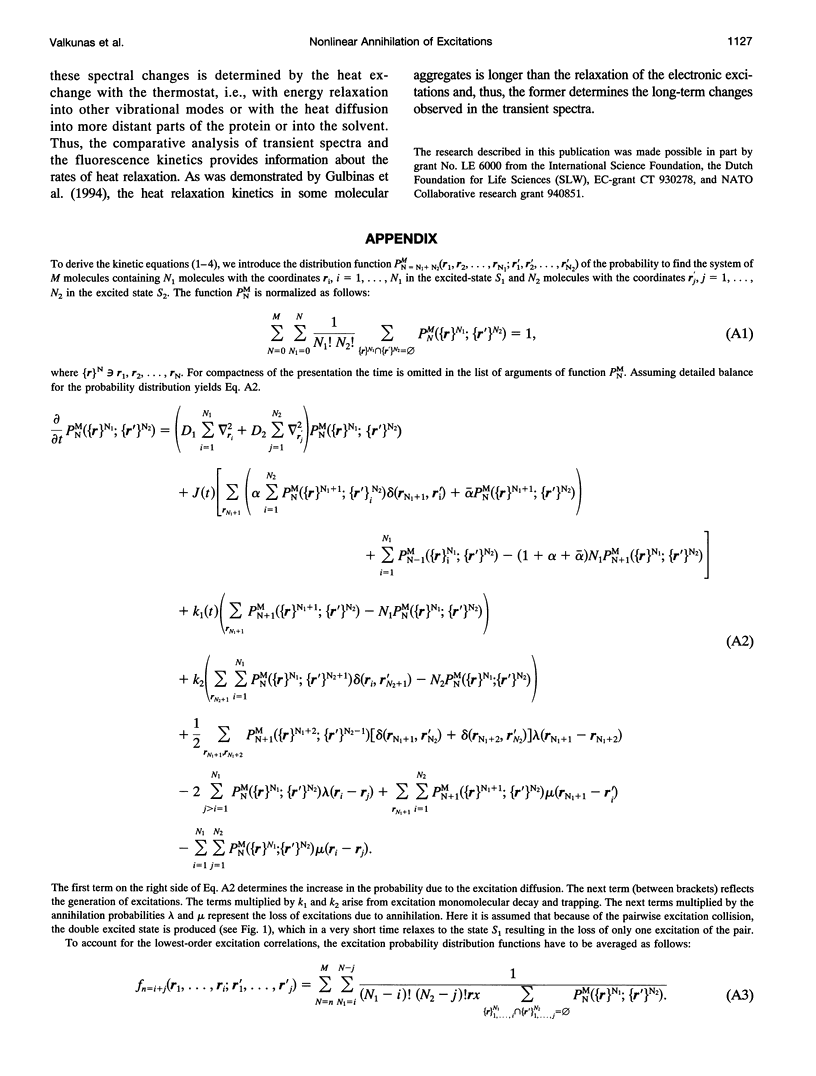
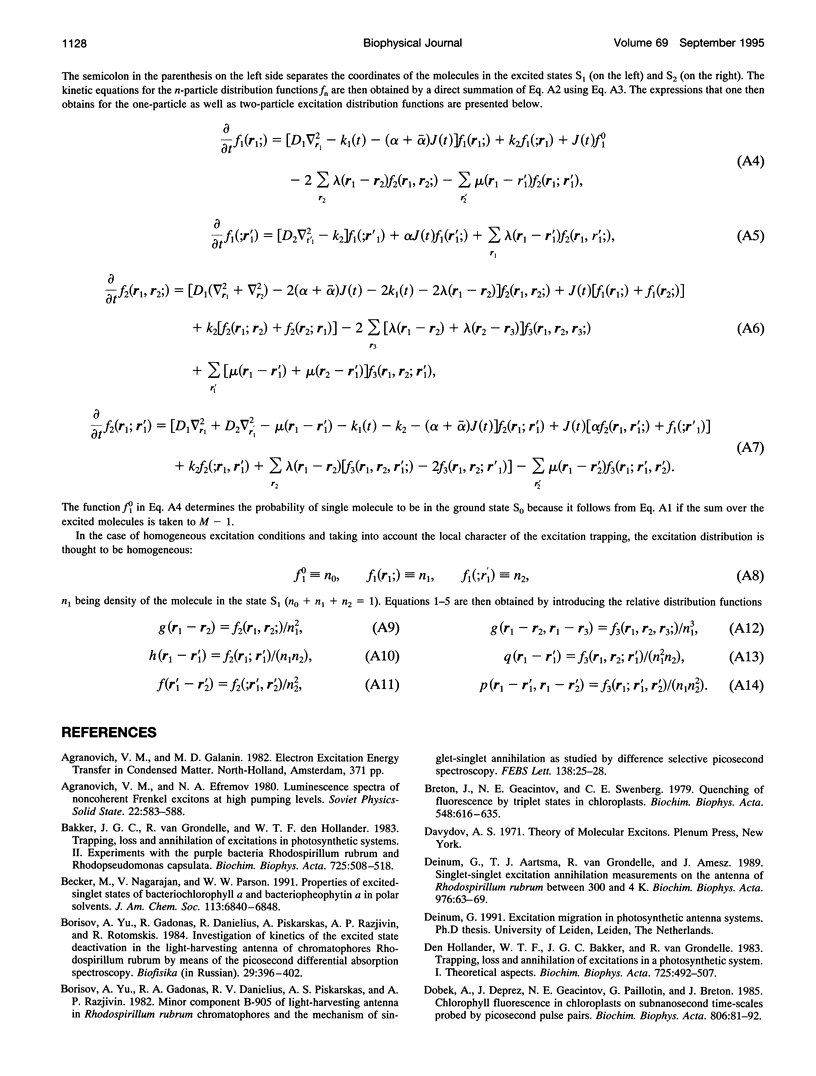
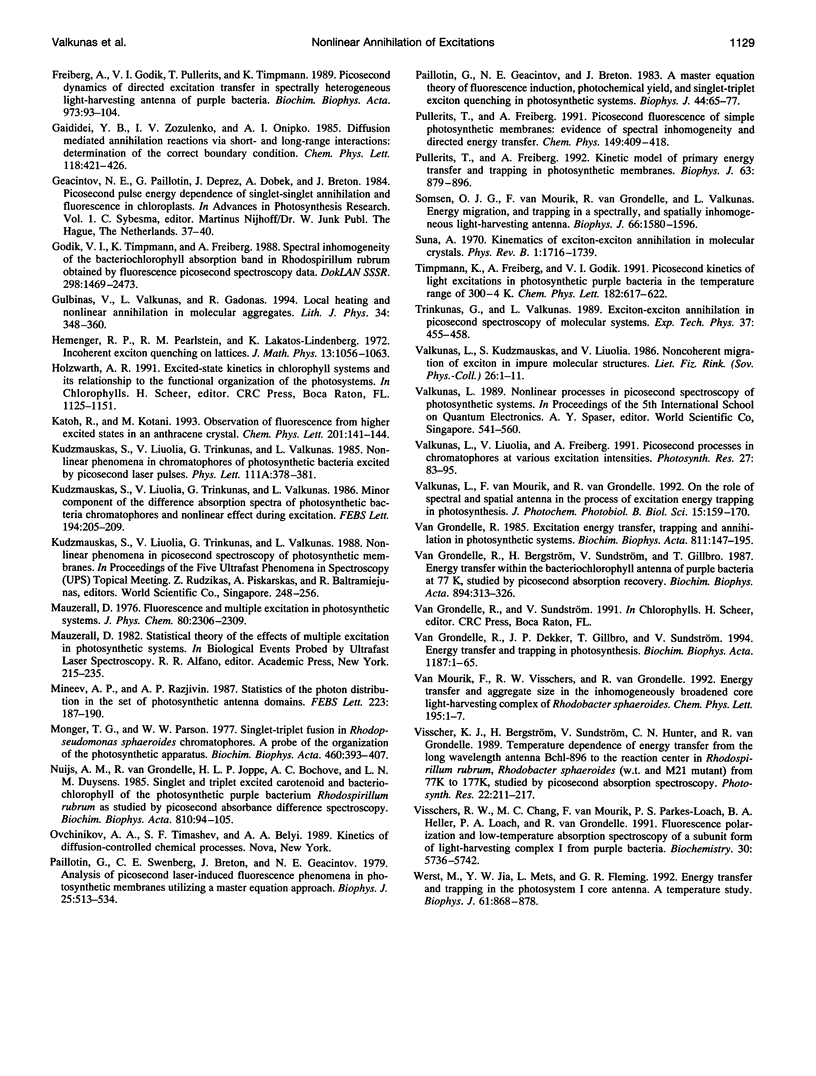
Selected References
These references are in PubMed. This may not be the complete list of references from this article.
- Breton J., Geacintov N. E., Swenberg C. E. Quenching of fluorescence by triplet excited states in chloroplasts. Biochim Biophys Acta. 1979 Dec 6;548(3):616–635. doi: 10.1016/0005-2728(79)90069-0. [DOI] [PubMed] [Google Scholar]
- Monger T. G., Parson W. W. Singlet-triplet fusion in Rhodopseudomonas sphaeroides chromatophores. A probe of the organization of the photosynthetic apparatus. Biochim Biophys Acta. 1977 Jun 9;460(3):393–407. doi: 10.1016/0005-2728(77)90080-9. [DOI] [PubMed] [Google Scholar]
- Paillotin G., Geacintov N. E., Breton J. A master equation theory of fluorescence induction, photochemical yield, and singlet-triplet exciton quenching in photosynthetic systems. Biophys J. 1983 Oct;44(1):65–77. doi: 10.1016/S0006-3495(83)84278-7. [DOI] [PMC free article] [PubMed] [Google Scholar]
- Paillotin G., Swenberg C. E., Breton J., Geacintov N. E. Analysis of picosecond laser induced fluorescence phenomena in photosynthetic membranes utilizing a master equation approach. Biophys J. 1979 Mar;25(3):513–533. doi: 10.1016/S0006-3495(79)85320-5. [DOI] [PMC free article] [PubMed] [Google Scholar]
- Pullerits T., Freiberg A. Kinetic model of primary energy transfer and trapping in photosynthetic membranes. Biophys J. 1992 Oct;63(4):879–896. doi: 10.1016/S0006-3495(92)81688-0. [DOI] [PMC free article] [PubMed] [Google Scholar]
- Visschers R. W., Chang M. C., van Mourik F., Parkes-Loach P. S., Heller B. A., Loach P. A., van Grondelle R. Fluorescence polarization and low-temperature absorption spectroscopy of a subunit form of light-harvesting complex I from purple photosynthetic bacteria. Biochemistry. 1991 Jun 11;30(23):5734–5742. doi: 10.1021/bi00237a015. [DOI] [PubMed] [Google Scholar]
- Werst M., Jia Y., Mets L., Fleming G. R. Energy transfer and trapping in the photosystem I core antenna. A temperature study. Biophys J. 1992 Apr;61(4):868–878. doi: 10.1016/S0006-3495(92)81894-5. [DOI] [PMC free article] [PubMed] [Google Scholar]


